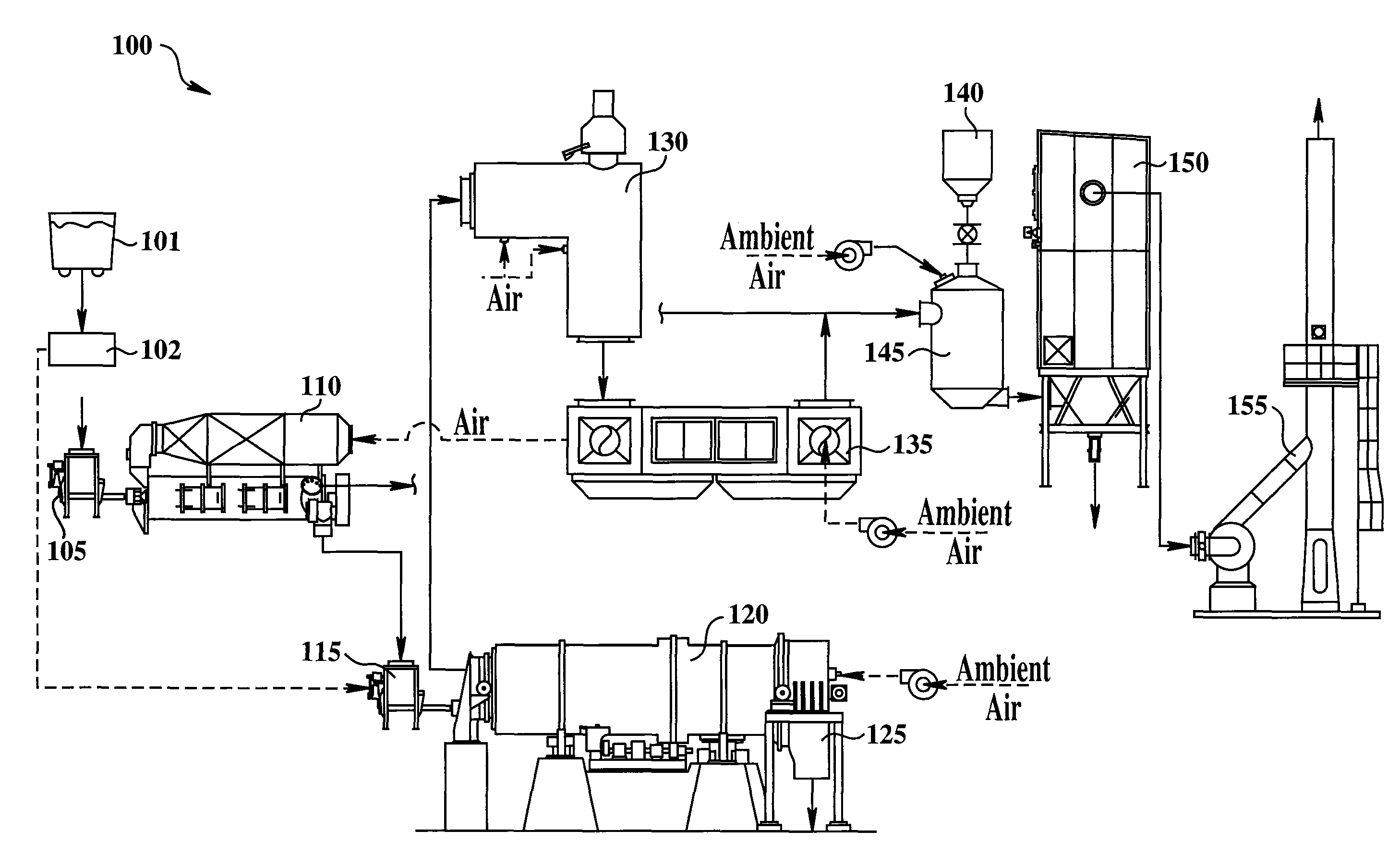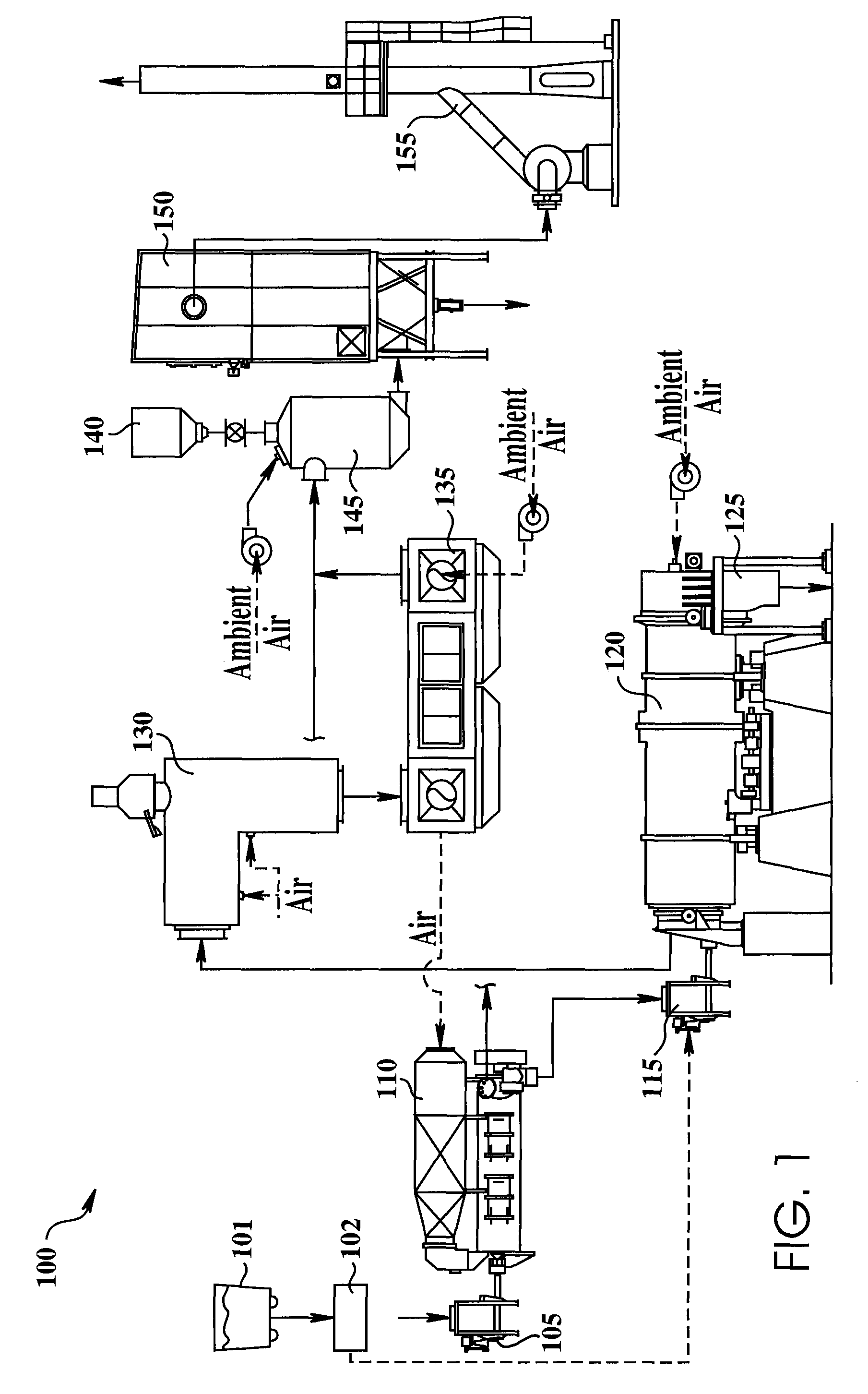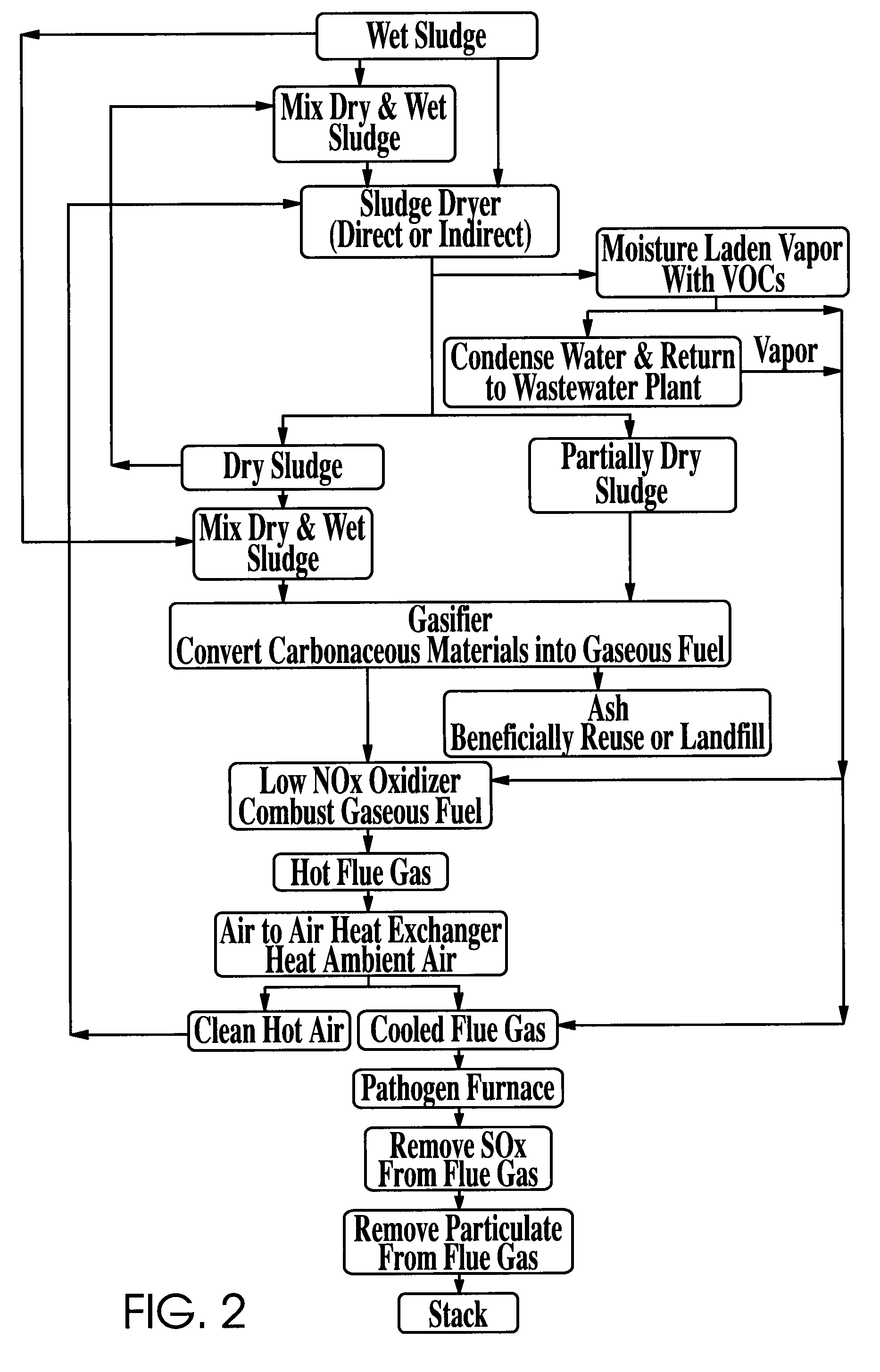Systems and Methods for Processing Municipal Wastewater Treatment Sewage Sludge
a technology for municipal wastewater treatment and sewage sludge, which is applied in steam use, drying machines, machines/engines, etc., can solve the problems of sludge wear and tear, substantial fuel and personnel costs, and sheer volume of sewage sludge produced, so as to reduce the effect of noxious and toxic by-products, and reduce the cost of treatmen
- Summary
- Abstract
- Description
- Claims
- Application Information
AI Technical Summary
Benefits of technology
Problems solved by technology
Method used
Image
Examples
example 1
Task 1. Municipal Sewage Sludge Feedstock Characterization
[0098]The first task was an experimental task performed in order to chemically characterize a sample of municipal sewage sludge and to conduct thermal gasification tests. The thermal gasification tests were performed to determine the rate of sludge gasification under a range of conditions. A representative sample (about 10 gallons) of digested municipal sewage sludge from a local wastewater treatment facility was obtained. The sample was weighed, dried, crushed, riffled, and analyzed. The complete chemical analyses included proximate, ultimate, particle size distribution, bulk density, ash fusion temperatures (under oxidizing and reducing atmospheres), major and minor components in ash, and gross calorific value.
[0099]Based on the results of the chemical characterization tests, operating conditions to characterize the gasification characteristics of the sewage sludge sample were determined. This included two tests in a high-p...
example 2
[0124]The primary objective of this task was to develop a model of the gasification using the ASPEN PLUS® process simulation software. The technology was simulated in ASPEN PLUS® at a digested sludge feed rate of 10 tons per hour (wet basis). The ASPEN PLUS® process simulation software allows for the estimation of the material and energy balances for the technology under five different operating cases, as described above. The five operating cases include gasification at five different temperatures, which result in different gasification products. Specifically, these five cases include gasification at 1200° F., 1100° F., 1500° F., 2450° F., and 2350° F., respectively.
[0125]The ASPEN PLUS® process simulation software was used to develop a model of the gasification technology. For the base case simulation, a digested sludge feed rate of 10 tons per hour (wet basis) was selected. Also, the sludge was received at the gasification plant with a moisture content of about 65 wt (35 wt % soli...
PUM
 Login to View More
Login to View More Abstract
Description
Claims
Application Information
 Login to View More
Login to View More - R&D
- Intellectual Property
- Life Sciences
- Materials
- Tech Scout
- Unparalleled Data Quality
- Higher Quality Content
- 60% Fewer Hallucinations
Browse by: Latest US Patents, China's latest patents, Technical Efficacy Thesaurus, Application Domain, Technology Topic, Popular Technical Reports.
© 2025 PatSnap. All rights reserved.Legal|Privacy policy|Modern Slavery Act Transparency Statement|Sitemap|About US| Contact US: help@patsnap.com



